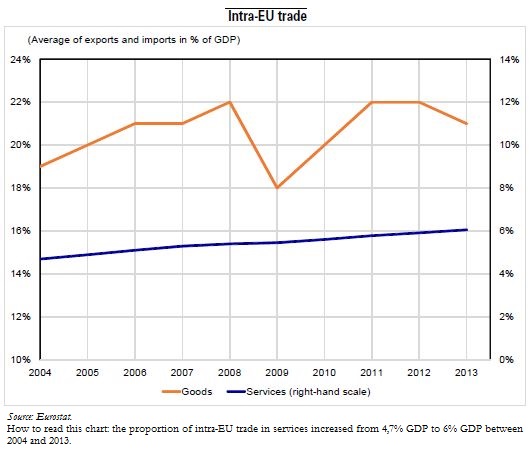Trésor-Economics No. 156 - Deepening the European internal market today: how and why
The European internal market has been one of the key goals of the economic and political project of the European Union (EU) since the Treaty of Rome (1957). Its gradual implementation has brought major economic gains and provided momentum for modernising EU economies. The process has promoted strong growth in trade between Member States, followed by closer economic integration. Beyond the lifting of internal trade barriers, the establishment of an integrated market thus depends on the implementation of the four freedoms – free movement of goods, services, capital and persons – and is based on cooperation, regulation and convergence.
The deepening of the European internal market remains an essential growth driver. Closer integration of European markets is, in particular, a prerequisite for enabling European countries to compete internationally against the other leading players with deep markets, such as the United States and China. This aspect is even more critical in a context of rapid technological changes. In addition, an efficient internal market is especially important for the good functionning of the euro area since it would allow to cope more effectively with economic shocks.
However, market integration at European level remains uneven. In the goods market, it appears to have made substantial progress; in the services market, by contrast, it is still very limited. In particular, the network industries – transport, energy and telecoms – remain largely fragmented. The deepening of the internal market also requires further integration in two essential areas: capital markets and personal mobility.
An integration process of such magnitude can, however, create economic, social and territorial imbalances. The consequences of such imbalances can be mitigated by implementing efficient regulation and solidarity mechanisms. A renewed drive for internal market integration should therefore go hand-in-hand with the creation of new regulatory bodies and the revival of convergence mechanisms.
